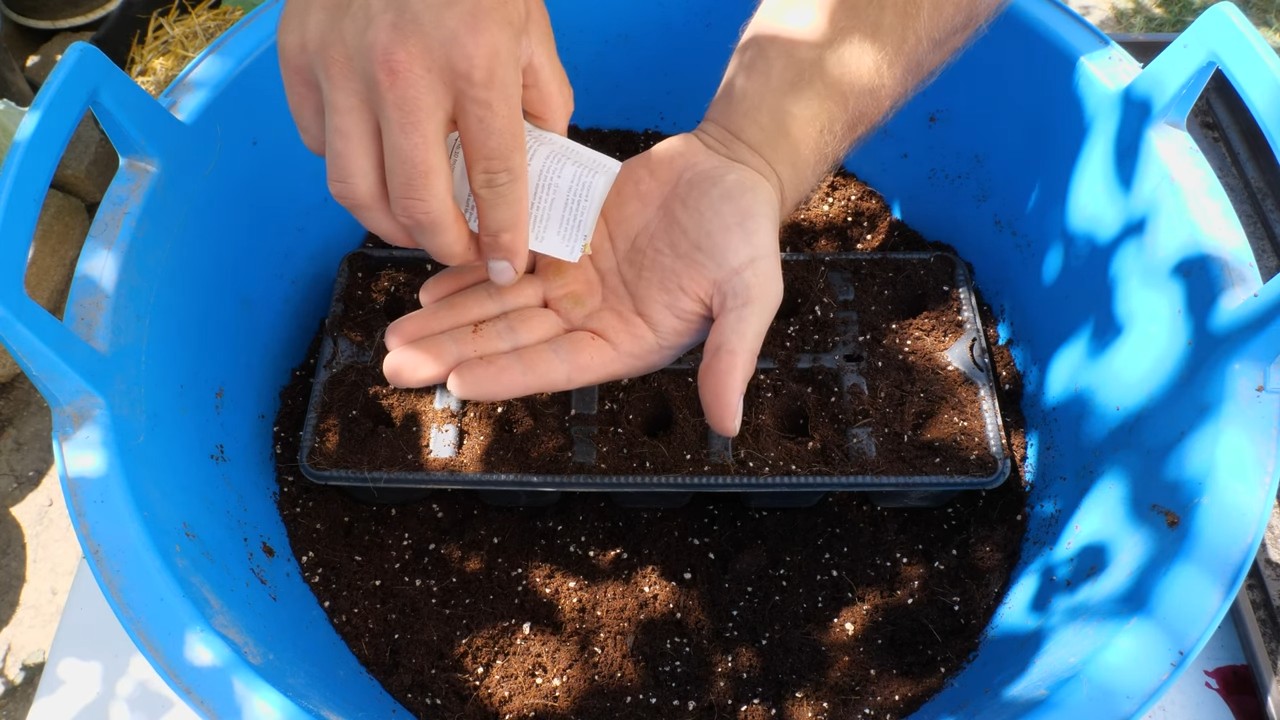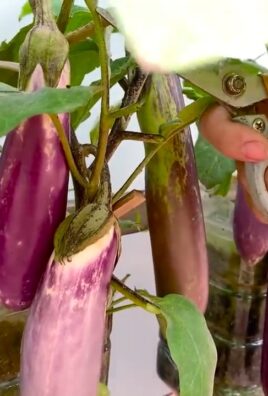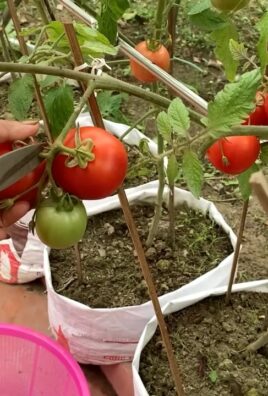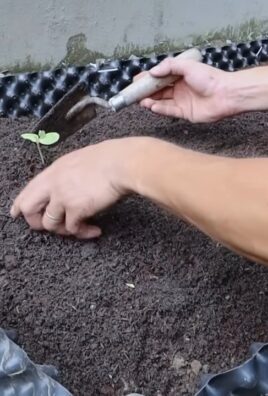Grow Spinach Indoors Easily and unlock a world of fresh, vibrant greens right at your fingertips! Imagine stepping into your kitchen and harvesting crisp, delicious spinach for your salad, smoothie, or side dish, all without ever leaving the comfort of your home. Sounds dreamy, right? Well, it’s more achievable than you think!
For centuries, cultivating plants indoors has been a way for people to connect with nature, even in urban environments. From ancient Egyptians growing herbs in pots to Victorian-era conservatories brimming with exotic flora, the desire to nurture life indoors is deeply ingrained in our history. Today, with limited space and busy lifestyles, the need for efficient and accessible gardening solutions is greater than ever.
That’s where this DIY guide comes in. Maybe you’re short on outdoor space, live in an apartment, or simply want to enjoy fresh spinach year-round. Whatever your reason, learning how to grow spinach indoors easily is a game-changer. I’m going to share simple, step-by-step instructions and clever hacks that will transform even the most novice gardener into an indoor spinach-growing pro. Get ready to ditch the store-bought bags and embrace the satisfaction of harvesting your own homegrown goodness!

Growing Spinach Easily at Home: Your DIY Guide for a Bountiful Harvest
I love fresh spinach! And what could be better than simply growing it yourself, whether there’s snow outside or the sun is shining? With this guide, I’ll show you how you can easily grow spinach in your own home. It’s easier than you think, and you’ll soon be rewarded with a delicious and healthy harvest!
What you need: The Shopping List
Before we get started, here is a list of everything you’ll need for your indoor spinach project:
- Spinach seeds: Choose a variety that is suitable for growing in containers. “Baby’s Leaf” or “Bloomsdale Long Standing” are good options.
- Planters: You’ll need containers with good drainage. Pots, planter boxes, or even recycled containers work well. Make sure they are at least 15 cm (6 inches) deep.
- High-quality potting soil: Use a well-draining potting soil that is rich in organic matter. Avoid garden soil, as it can be too heavy.
- Grow light (optional, but recommended): Spinach needs a lot of light. If you don’t have enough natural light, a grow light is essential.
- Spray bottle: For moistening the soil.
- Fertilizer (optional): An organic liquid fertilizer can help promote growth.
- Watering can or measuring cup: For watering the plants.
- Thermometer: To keep an eye on the temperature.
Step-by-Step Guide: How to Succeed at Growing Spinach
Here is a detailed guide on how to grow your own indoor spinach:
1. Preparation: Pots and Soil
- First, clean your planters thoroughly. This is important to prevent diseases.
- Fill the pots with potting soil. Leave about 2-3 cm (1 inch) of space to the rim.
- Lightly moisten the soil with the spray bottle. It should be damp, but not soaked.
2. Sowing: Getting the Seeds into the Soil
- Sprinkle the spinach seeds evenly over the surface of the soil.
- Cover the seeds with a thin layer of soil (about 0.5 cm / 0.2 inches).
- Gently press the soil down.
- Spray the surface again with water.
3. The Location: Light and Temperature
- Place the pots in a bright location. A south-facing window is ideal.
- If you don’t have sufficient natural light, use a grow light. Place it about 15-30 cm (6-12 inches) above the pots.
- Spinach prefers cool temperatures. 15-20°C (59-68°F) is ideal. Avoid locations near heaters.
4. Watering: Finding the Right Balance
- Keep the soil moist, but not soaked.
- Water regularly, but avoid waterlogging.
- Check the soil’s moisture by sticking your finger about 2 cm (1 inch) deep into the soil. If it feels dry, it’s time to water.
- It’s best to water in the morning so the leaves can dry during the day.
5. Germination: The First Green Tips
- Germination usually takes 5-10 days.
- As soon as the first seedlings appear, ensure they have sufficient light and good ventilation.
6. Thinning: Making Space for Growth
- When the spinach plants are about 5 cm (2 inches) high, thin them out.
- Remove the weakest plants so that the remaining plants have about 5-7 cm (2-3 inches) of space between them. This gives them enough room to grow.
7. Fertilizing: Extra Nutrients for a Bountiful Harvest
- Optionally, you can fertilize your spinach plants with an organic liquid fertilizer.
- Follow the instructions on the fertilizer package.
- Fertilize about every 2-3 weeks.
8. Lighting: The Key to Healthy Growth
- Spinach needs at least 6 hours of light per day.
- If you are using a grow light, make sure it has the right light intensity and color spectrum.
- LED grow lights are energy-efficient and give off little heat.
9. Pests and Diseases: Prevention is Better Than Cure
- Check your spinach plants regularly for pests and diseases.
- Aphids, spider mites, and powdery mildew can cause problems.
- In case of an infestation, you can use natural pesticides like neem oil or insecticidal soap.
- Ensure good ventilation to prevent fungal diseases.
10. Harvest: The Reward for Your Effort
- You can harvest your spinach as soon as the leaves are large enough (about 10-15 cm / 4-6 inches).
- Cut off the outer leaves so that the inner leaves can continue to grow.
- This way, you can harvest over a longer period.
- Wash the spinach thoroughly before consumption.
Additional Tips and Tricks for Successful Spinach Cultivation
- Variety selection: Experiment with different spinach varieties to find out which ones thrive best in your indoor garden.
- Crop rotation: Don’t grow spinach in the same spot every year to prevent diseases.
- Soil improvement: Mix compost or other organic materials into the soil to improve nutrient supply.
- Ventilation: Ensure good ventilation to prevent fungal diseases. A small fan can help.
- Temperature control: Spinach likes it cool. Avoid high temperatures, as these can impair growth.
- Pest protection: Use nets or covers to protect your plants from pests.
- Regular checks: Check your plants regularly for signs of disease or pests.
- Patience: Be patient! Growing spinach takes time and care.
Common Problems and Solutions
- Yellow leaves: Can indicate a nutrient deficiency or overwatering. Fertilize the plants and ensure good drainage.
- Limp leaves: Can indicate a lack of water or temperatures that are too high. Water the plants and provide a cooler environment.
- Small leaves: Can indicate a lack of light. Move the plants to a brighter location or use a grow light.
- Pests: Combat pests with natural pesticides.
- Fungal diseases: Ensure good ventilation and avoid waterlogging.
Spinach in the Kitchen: Versatile and Delicious
Spinach is incredibly versatile and can be used in many different dishes. Here are a few ideas:
Casseroles: Spinach works well in casseroles.
Salads: Fresh spinach is a great base for salads.
Smoothies: Add a handful of spinach to your smoothie for an extra nutrient boost.
Soups: Spinach is a delicious and healthy ingredient for soups.
Stir-fries: Add spinach to your stir-fry dishes.

Conclusion
So, there you have it! Growing spinach indoors easily is not just a pipe dream; it’s a tangible reality within your reach. We’ve walked you through the simple steps, demystified the process, and armed you with the knowledge to cultivate your own vibrant, leafy greens right in the comfort of your home. Why is this a must-try? Because it offers a multitude of benefits that extend far beyond just having fresh spinach on hand.
Imagine the satisfaction of harvesting your own food, knowing exactly where it came from and what went into its growth. No more worrying about pesticides or long transportation distances. You’re in control, providing your family with the freshest, most nutritious spinach possible. Plus, indoor gardening is incredibly therapeutic. The simple act of nurturing a plant, watching it grow, and reaping the rewards can be incredibly calming and rewarding, offering a much-needed respite from the stresses of daily life.
But the benefits don’t stop there. Growing spinach indoors is also a fantastic way to reduce your carbon footprint. By sourcing your own food locally (and what’s more local than your own home?), you’re minimizing the environmental impact associated with transportation and commercial agriculture. It’s a small change that can make a big difference.
And let’s not forget the sheer versatility of fresh, homegrown spinach. From vibrant salads and hearty soups to nutritious smoothies and delicious side dishes, the culinary possibilities are endless. You can even experiment with different varieties of spinach, such as baby spinach for tender salads or savoy spinach for cooking. Consider adding companion plants like basil or chamomile to your indoor garden to enhance the flavor and growth of your spinach. You can also try succession planting, sowing new seeds every few weeks, to ensure a continuous harvest throughout the year.
Don’t be afraid to experiment! Try different lighting setups, soil mixtures, and watering schedules to find what works best for your specific environment. Observe your plants closely, paying attention to their leaves, stems, and overall health. This will help you identify any potential problems early on and take corrective action.
We truly believe that anyone can successfully grow spinach indoors easily, regardless of their gardening experience. It’s a simple, rewarding, and sustainable way to enjoy fresh, healthy greens all year round. So, what are you waiting for? Grab some seeds, gather your supplies, and embark on your indoor spinach-growing adventure today!
We’re eager to hear about your experiences! Share your tips, tricks, and successes in the comments below. Let’s create a community of indoor spinach growers and inspire others to join the movement. Don’t forget to tag us in your photos on social media – we can’t wait to see your thriving indoor gardens!
Frequently Asked Questions (FAQ)
What is the best type of spinach to grow indoors?
While most spinach varieties can be grown indoors, some are better suited than others. Baby spinach varieties, such as ‘Baby’s Leaf Hybrid’ or ‘Space,’ are popular choices due to their compact size and quick growth. They mature relatively quickly, making them ideal for indoor cultivation. Other good options include ‘Tyee’ and ‘Winter Bloomsdale.’ Consider the size of your growing space and the amount of light available when selecting a variety. Experimenting with different types can also be a fun way to discover your personal preference.
How much light does indoor spinach need?
Spinach requires a good amount of light to thrive. Ideally, it needs at least 6-8 hours of direct sunlight per day. If you don’t have a sunny windowsill, you’ll need to supplement with artificial lighting. Grow lights, such as fluorescent or LED lights, are excellent options. Position the lights a few inches above the plants and keep them on for 12-14 hours per day. Monitor your plants closely and adjust the lighting as needed. If the leaves are pale or leggy, it indicates that they’re not getting enough light.
What type of soil is best for growing spinach indoors?
Spinach prefers well-draining, nutrient-rich soil. A good potting mix specifically formulated for vegetables is a great choice. You can also create your own mix by combining equal parts of potting soil, compost, and perlite or vermiculite. The compost provides essential nutrients, while the perlite or vermiculite improves drainage and aeration. Avoid using garden soil, as it can be too heavy and may contain pests or diseases.
How often should I water my indoor spinach plants?
Water your spinach plants regularly, keeping the soil consistently moist but not waterlogged. Check the soil moisture by sticking your finger about an inch deep. If it feels dry, it’s time to water. Water deeply, allowing the excess water to drain out of the bottom of the pot. Avoid overwatering, as this can lead to root rot. The frequency of watering will depend on factors such as the temperature, humidity, and size of the pot.
How do I fertilize my indoor spinach plants?
Spinach is a heavy feeder, so it’s important to fertilize regularly. Use a balanced liquid fertilizer diluted to half strength every 2-3 weeks. Look for a fertilizer that is specifically formulated for leafy greens. You can also amend the soil with compost or worm castings to provide a slow-release source of nutrients. Avoid over-fertilizing, as this can burn the roots and damage the plants.
How do I harvest my indoor spinach?
You can start harvesting spinach leaves when they are about 4-6 inches long. Simply snip off the outer leaves with scissors or a knife, leaving the inner leaves to continue growing. This cut-and-come-again method allows you to harvest spinach continuously for several weeks. Harvest in the morning, when the leaves are crisp and fresh.
What are some common problems when growing spinach indoors?
So, there you have it! Growing spinach indoors easily is not just a pipe dream; it’s a tangible reality within your reach. We’ve walked you through the simple steps, demystified the process, and armed you with the knowledge to cultivate your own vibrant, leafy greens right in the comfort of your home. Why is this a must-try? Because it offers a multitude of benefits that extend far beyond just having fresh spinach on hand.
Imagine the satisfaction of harvesting your own food, knowing exactly where it came from and what went into its growth. No more worrying about pesticides or long transportation distances. You’re in control, providing your family with the freshest, most nutritious spinach possible. Plus, indoor gardening is incredibly therapeutic. The simple act of nurturing a plant, watching it grow, and reaping the rewards can be incredibly calming and rewarding, offering a much-needed respite from the stresses of daily life.
But the benefits don’t stop there. Growing spinach indoors is also a fantastic way to reduce your carbon footprint. By sourcing your own food locally (and what’s more local than your own home?), you’re minimizing the environmental impact associated with transportation and commercial agriculture. It’s a small change that can make a big difference.
And let’s not forget the sheer versatility of fresh, homegrown spinach. From vibrant salads and hearty soups to nutritious smoothies and delicious side dishes, the culinary possibilities are endless. You can even experiment with different varieties of spinach, such as baby spinach for tender salads or savoy spinach for cooking. Consider adding companion plants like basil or chamomile to your indoor garden to enhance the flavor and growth of your spinach. You can also try succession planting, sowing new seeds every few weeks, to ensure a continuous harvest throughout the year.
Don’t be afraid to experiment! Try different lighting setups, soil mixtures, and watering schedules to find what works best for your specific environment. Observe your plants closely, paying attention to their leaves, stems, and overall health. This will help you identify any potential problems early on and take corrective action.
We truly believe that anyone can successfully grow spinach indoors easily, regardless of their gardening experience. It’s a simple, rewarding, and sustainable way to enjoy fresh, healthy greens all year round. So, what are you waiting for? Grab some seeds, gather your supplies, and embark on your indoor spinach-growing adventure today!
We’re eager to hear about your experiences! Share your tips, tricks, and successes in the comments below. Let’s create a community of indoor spinach growers and inspire others to join the movement. Don’t forget to tag us in your photos on social media – we can’t wait to see your thriving indoor gardens!
Frequently Asked Questions (FAQ)
What is the best type of spinach to grow indoors?
While most spinach varieties can be grown indoors, some are better suited than others. Baby spinach varieties, such as ‘Baby’s Leaf Hybrid’ or ‘Space,’ are popular choices due to their compact size and quick growth. They mature relatively quickly, making them ideal for indoor cultivation. Other good options include ‘Tyee’ and ‘Winter Bloomsdale.’ Consider the size of your growing space and the amount of light available when selecting a variety. Experimenting with different types can also be a fun way to discover your personal preference.
How much light does indoor spinach need?
Spinach requires a good amount of light to thrive. Ideally, it needs at least 6-8 hours of direct sunlight per day. If you don’t have a sunny windowsill, you’ll need to supplement with artificial lighting. Grow lights, such as fluorescent or LED lights, are excellent options. Position the lights a few inches above the plants and keep them on for 12-14 hours per day. Monitor your plants closely and adjust the lighting as needed. If the leaves are pale or leggy, it indicates that they’re not getting enough light.
What type of soil is best for growing spinach indoors?
Spinach prefers well-draining, nutrient-rich soil. A good potting mix specifically formulated for vegetables is a great choice. You can also create your own mix by combining equal parts of potting soil, compost, and perlite or vermiculite. The compost provides essential nutrients, while the perlite or vermiculite improves drainage and aeration. Avoid using garden soil, as it can be too heavy and may contain pests or diseases.
How often should I water my indoor spinach plants?
Water your spinach plants regularly, keeping the soil consistently moist but not waterlogged. Check the soil moisture by sticking your finger about an inch deep. If it feels dry, it’s time to water. Water deeply, allowing the excess water to drain out of the bottom of the pot. Avoid overwatering, as this can lead to root rot. The frequency of watering will depend on factors such as the temperature, humidity, and size of the pot.
How do I fertilize my indoor spinach plants?
Spinach is a heavy feeder, so it’s important to fertilize regularly. Use a balanced liquid fertilizer diluted to half strength every 2-3 weeks. Look for a fertilizer that is specifically formulated for leafy greens. You can also amend the soil with compost or worm castings to provide a slow-release source of nutrients. Avoid over-fertilizing, as this can burn the roots and damage the plants.
How do I harvest my indoor spinach?
You can start harvesting spinach leaves when they are about 4-6 inches long. Simply snip off the outer leaves with scissors or a knife, leaving the inner leaves to continue growing. This cut-and-come-again method allows you to harvest spinach continuously for several weeks. Harvest in the morning, when the leaves are crisp and fresh.
What are some common problems when growing spinach indoors?
Some common problems when growing spinach indoors include aphids, spider mites, and fungal diseases. Inspect your plants regularly for signs of pests or diseases. If you find any, treat them promptly with an appropriate insecticide or fungicide. Good air circulation and proper watering can help prevent many of these problems.
Can I grow spinach indoors year-round?
Yes, you can grow spinach indoors year-round, provided you have adequate light and temperature control. Spinach prefers cooler temperatures, so keep the growing area between 60-70°F (15-21°C). If the temperature is too high, the plants may bolt (go to seed) prematurely.
How do I prevent spinach from bolting indoors?
Bolting is a common problem with spinach, especially in warm weather. To prevent bolting indoors, keep the growing area cool, provide adequate shade during the hottest part of the day, and harvest the leaves regularly. Choosing bolt-resistant varieties can also help.
What else can I grow alongside my spinach indoors?
Companion planting can be beneficial for spinach. Good companions include radishes, lettuce, carrots, and onions. These plants can help deter pests, improve soil health, and enhance the flavor of your spinach. Avoid planting spinach near fennel, as it can inhibit its growth.




Leave a Comment